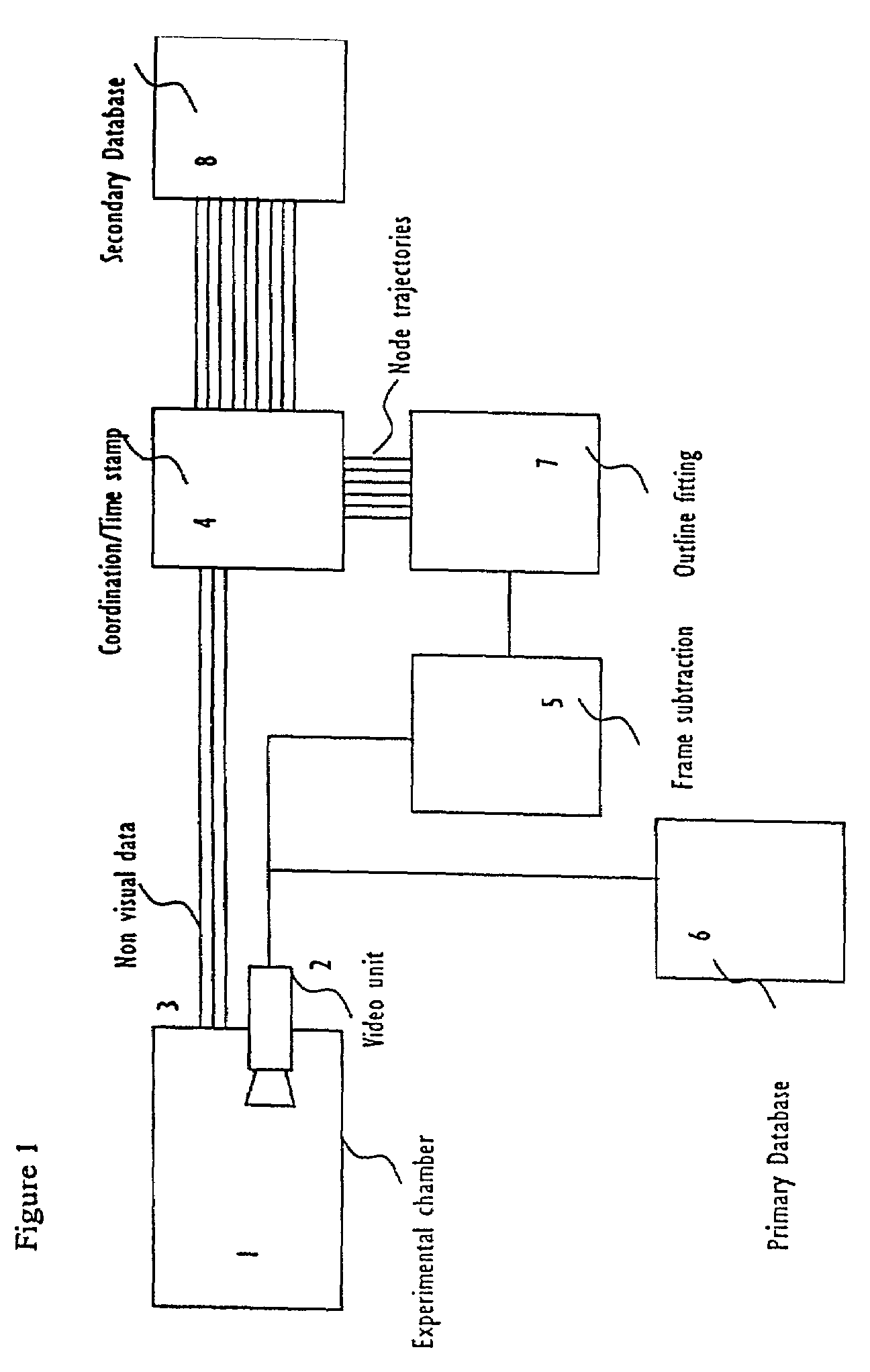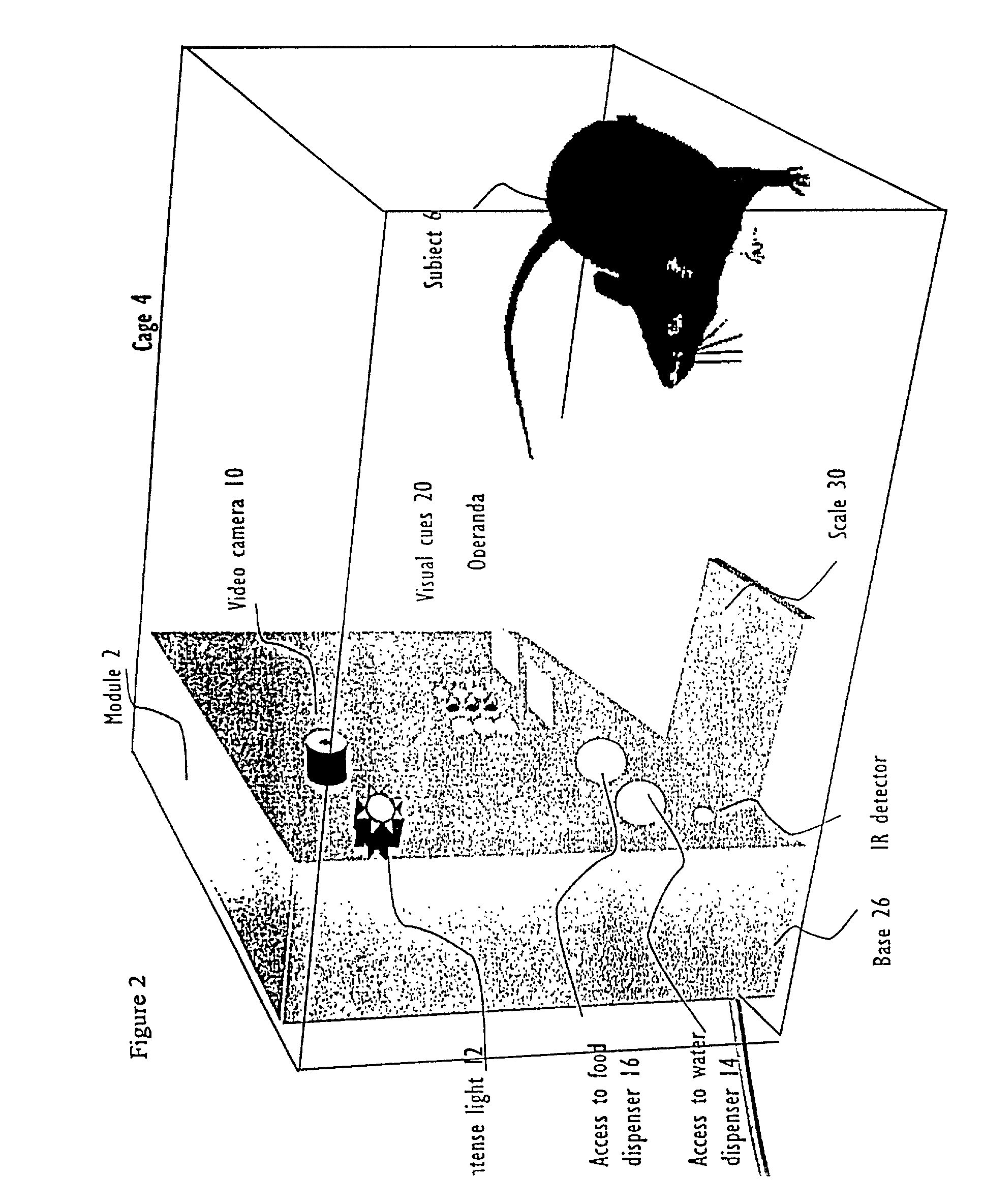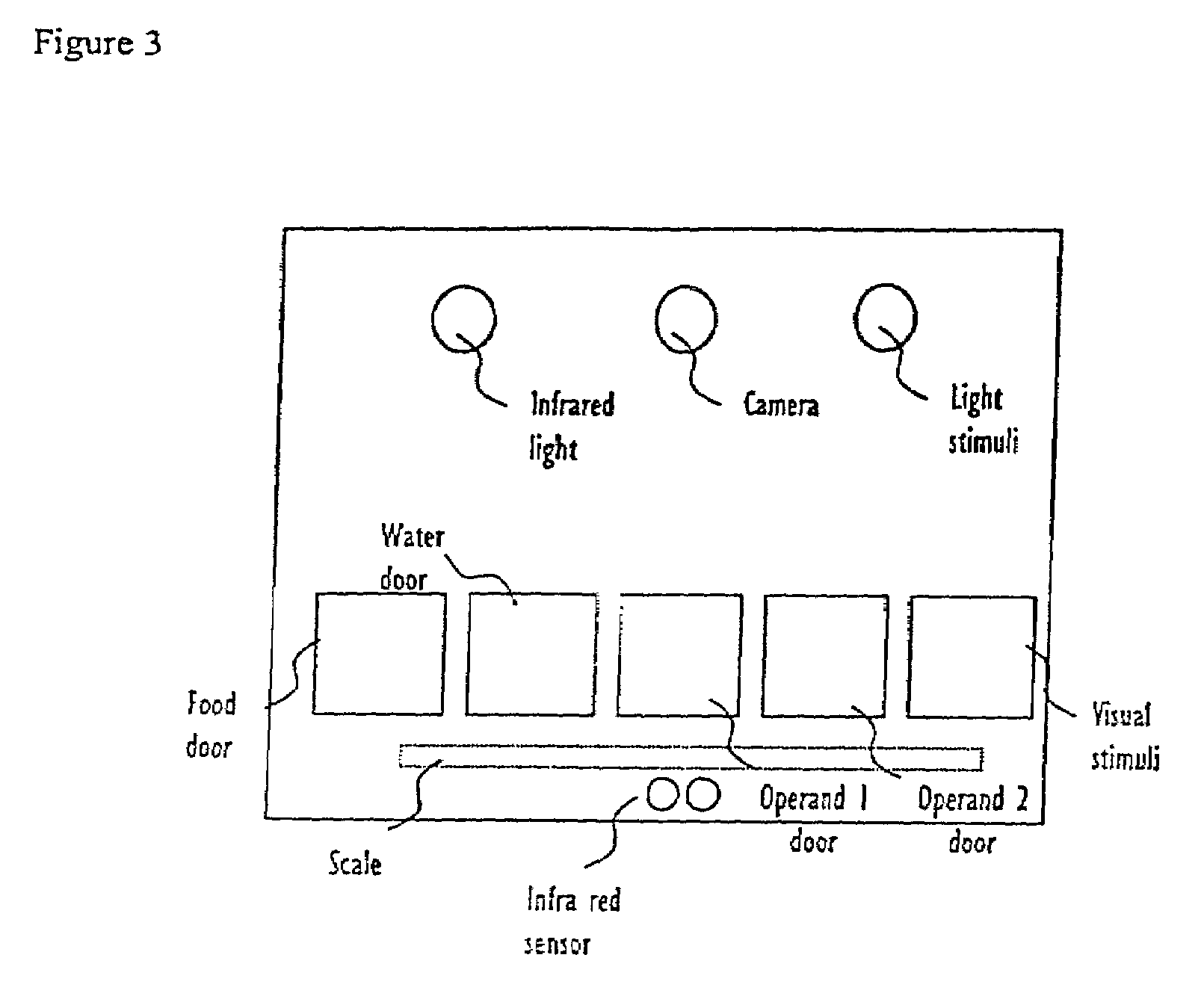Systems and methods for monitoring behavior informatics
a technology of behavior informatics and systems, applied in the direction of force component measurement, drug reference, material analysis, etc., can solve the problems of lack of progress in understanding neuropsychiatric disorders, abnormal sensory function, rare capacity to test the development of genetically modified animals, etc., and achieve the effect of dramatic leveraging the efficiency of laboratory personnel
- Summary
- Abstract
- Description
- Claims
- Application Information
AI Technical Summary
Benefits of technology
Problems solved by technology
Method used
Image
Examples
example 1
Analysis
[0229]The output of the subject system can be visualized as a stream of numbers (also called “time series”) representing the parameters that result from the computer vision algorithm, and those that arise from the other measuring devices implemented in the subject system (e.g., cages).
[0230]FIG. 11A shows an exemplary combination of data streaming from an animal in an embodiment of the subject system. For each window (in this case shown to coincide with the ECG sliding window) a given set of states and parameters is obtained from each mouse. These dynamically changing “frames” of behavior present different types of complexity. First, they change over time in what is normally called the “time course” of behavior (e.g., rearing may be very frequent initially but decline significantly towards the end of the session). Second, each frame has some dependency on the previous one (e.g., an animal cannot step down if it has not stepped up first), and this is called the “temporal stru...
example 2
System Hardware
[0256]FIG. 1 depicts an example of one embodiment of a hardware device for use with the systems and methods described herein that can streamline data capture for the purpose of building a database of behavioral information.
[0257]To this end, the depicted apparatus comprises a plurality of detectors for detecting physical and biological responses. Various types of sensors may be used to collect and generate data for specific responses, and the types and arrangements of sensors employed may vary according to the application. For example, sensors may be provided for vocal recording, visual recording of the test subject's activities as well as for recording biological data of the test subject. These sensors may be external devices, or optionally, some of these devices may be implanted in or remain outside the test subject. Additionally, some sensors may be partly implanted into the specimen and partly external. In any case, the depicted apparatus provides sufficient senor...
example 3
System Hardware
[0330]Another aspect of the invention provides animal habitats (such as cages), as well as kits and modules for outfitting habitats, for automated capture of behavioral, neurological and / or physiological measurements. In certain embodiments, the subject systems are designed to be flexible and accommodate a wide variety of experimental apparatus. In certain embodiments of the habitat, the wall panels, floor and top can be replaceable modules that can be fitted with various instruments depending on the needs of the research in progress. See FIGS. 15 and 16, as one example. Additionally, the subject habitats can be designed to facilitate the conduct of as many experiments as possible during a single session without the need to exchange instrument modules. In certain preferred embodiments, the measurement devices and sensors are provided with computer or other digital or analog-to-digital interfaces.
[0331]FIGS. 15 and 16 show different views of an exemplary animal habitat...
PUM
 Login to View More
Login to View More Abstract
Description
Claims
Application Information
 Login to View More
Login to View More - R&D
- Intellectual Property
- Life Sciences
- Materials
- Tech Scout
- Unparalleled Data Quality
- Higher Quality Content
- 60% Fewer Hallucinations
Browse by: Latest US Patents, China's latest patents, Technical Efficacy Thesaurus, Application Domain, Technology Topic, Popular Technical Reports.
© 2025 PatSnap. All rights reserved.Legal|Privacy policy|Modern Slavery Act Transparency Statement|Sitemap|About US| Contact US: help@patsnap.com



